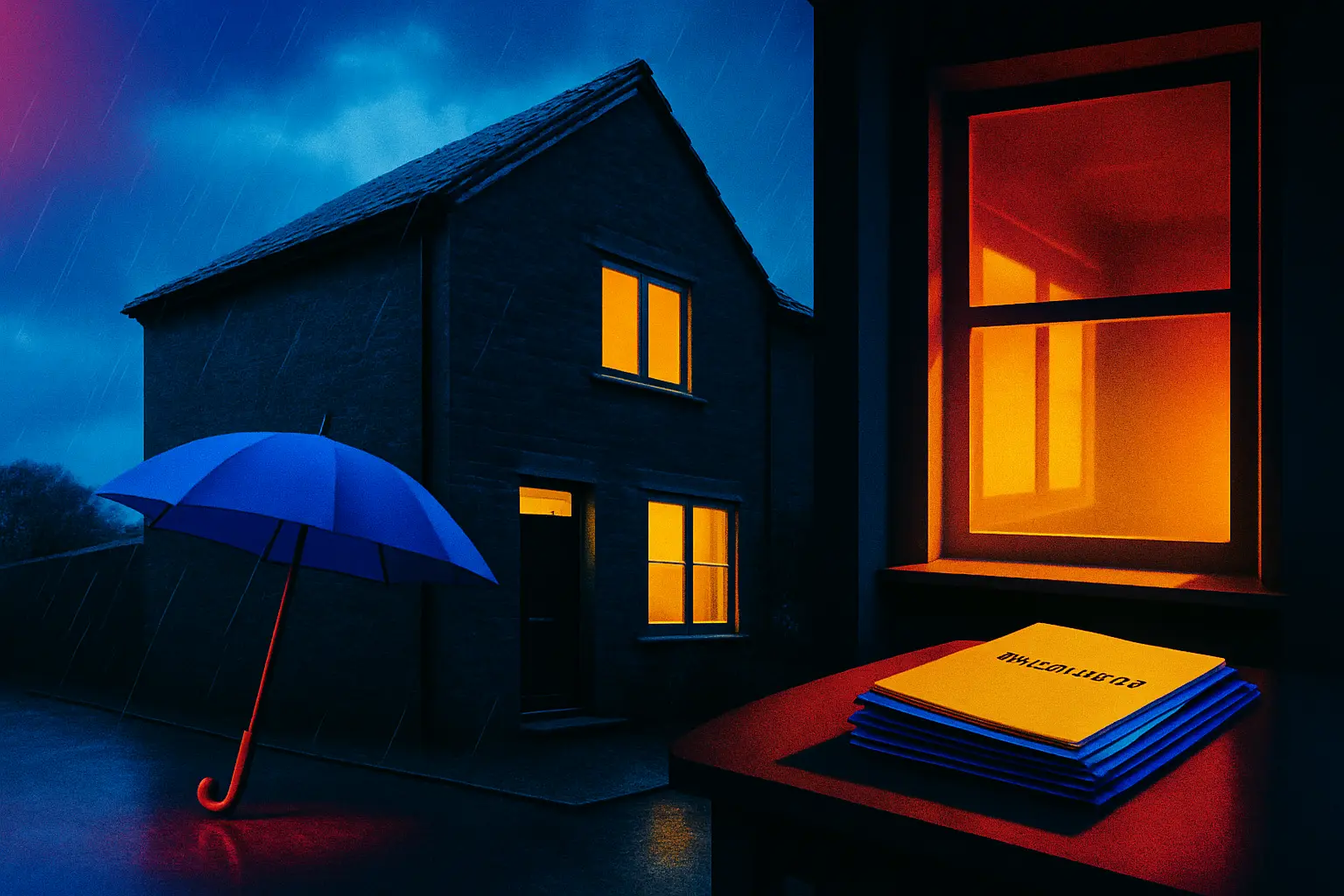Documents you need for Solar panels Home services (UK)
Everything UK homeowners need to document and approve a safe, compliant solar installation, from planning checks to G99 grid approval and warranties.
Solar documents made simple for UK households
Switcha explains the paperwork that keeps your solar install safe, compliant, and eligible for savings - with clear steps and who handles what.
Understanding paperwork is understanding payback - compliance unlocks savings, eligibility, and peace of mind.
Who benefits from this guide
If you are a UK homeowner planning roof solar panels or adding a battery, this guide is for you. It is especially useful if you live in England, Scotland, or Wales and want to avoid delays, failed inspections, or missed incentives by getting the documents right first time.
Terms you will see - explained clearly
- Planning permission - Formal consent from your local planning authority. Usually not required for typical roof solar where panels sit within 200 mm of the roof and below the ridge. Exceptions include listed buildings and some conservation areas.
- Permitted development - Rules that allow works without planning permission if criteria are met. Solar on most homes qualifies, including most flat-roof installs after rule easements in late 2023.
- Building regulations - UK rules that ensure structural and electrical safety. Solar must comply regardless of planning status. Typical checks include roof loading capacity, electrics, fire safety, and ventilation pathways.
- MCS - The Microgeneration Certification Scheme that certifies installers and products. MCS installers can self-certify building regulations compliance and are commonly required for incentives.
- DNO and G99 - Your Distribution Network Operator manages the local grid. Grid-tied systems usually require G99 application and approval after installation to operate legally and safely.
- Inverter and battery - The inverter converts DC to AC for home use. A battery stores surplus energy for evenings and outages, improving self-consumption.
- O&M and warranties - Operation and maintenance documentation and product warranties covering panels, inverter, battery, and workmanship.
The essential paperwork - at a glance
| Document or approval | Who issues it | When needed | Who usually handles it |
|---|---|---|---|
| Planning permission confirmation or permitted development check | Local planning authority | Before installation - only if required | Homeowner or installer |
| Building regulations compliance certificate (self-certification) | MCS installer or Building Control | After installation | Installer |
| Structural assessment or survey report | Qualified surveyor or installer | Before installation | Installer arranges |
| Electrical Installation Certificate and Part P notification (where applicable) | Competent Person Scheme installer | After installation | Installer |
| MCS certificate and handover pack | MCS installer | After commissioning | Installer |
| G99 notification or approval from DNO | Distribution Network Operator | After commissioning but before export | Installer |
| Product warranties and datasheets | Manufacturers | On delivery/commissioning | Installer provides |
| As-built schematics and O&M manual | Installer | At handover | Installer |
Your options and how they affect paperwork
- Panels only, grid-tied - The most common route. Requires building regulations compliance, MCS certification, Electrical Installation Certificate, and G99 process. Planning permission usually not needed.
- Panels with battery storage - Adds battery datasheets, commissioning records, and sometimes additional DNO information. Improves self-consumption and resilience.
- Flat roof systems - Now generally simpler under eased 2023 rules, but ballast weight and wind loading must be evidenced. Expect a structural check and detailed mounting documentation.
- Conservation areas or listed buildings - Early dialogue with the local authority is vital. You may need design drawings, visual impact notes, and a formal planning application.
- Off-grid or hybrid systems - Off-grid removes the G99 step but requires robust electrical and safety documentation. Hybrids still need DNO paperwork if grid-tied.
Short standout line: Using an MCS installer minimises paperwork and maximises eligibility.
Money matters - costs, returns, and risk controls
- Upfront costs - A typical 4 kW system may require around 20 m² of roof and can be installed in 2 to 3 days. Price varies by roof type, scaffolding, and whether you add a battery.
- Running savings - South-facing roofs at around 30 degrees perform best. Batteries can increase bill savings by storing daytime generation for evening use.
- Incentives - UK-wide schemes and regional support can offset costs. The Boiler Upgrade Scheme primarily funds heat pumps but can complement broader home energy upgrades. Scotland offers additional help through programmes such as Warmer Homes Scotland, subject to assessment.
- Risks - Non-compliant installs risk enforcement or connection refusals. Mitigate by insisting on MCS certification, documented structural checks, and DNO approvals.
Compliance is not a hurdle - it is your quality assurance and savings gateway.
Are you eligible - practical checks
- Property type - Most houses and many flats qualify. Listed buildings and some conservation areas may need planning permission.
- Roof suitability - Aim for 20 m² clear space for around 4 kW, with minimal shading. Typical panel loads are roughly 20 kg per m². A structural assessment may be advised for older or complex roofs.
- Orientation and pitch - South-facing around 30 degrees performs strongly, but east or west can still deliver good returns.
- Electrical setup - A modern consumer unit and space for an inverter and potential battery will help. Your installer will advise on upgrades.
- Grid connection - All grid-tied systems must follow G99 with the local DNO. Installers typically manage this as part of commissioning.
From survey to switch-on - the simple sequence
- Initial suitability check and desktop design
- Optional structural survey for roof loading
- Formal quote, contract, and installation date
- Scaffolding and mounting system fitted safely
- Panels, wiring, inverter and battery installed
- Electrical testing and commissioning completed
- MCS certificate and handover documents issued
- G99 submitted to DNO and approval recorded
Weighing it up - pros, cons, and cautions
Pros:
- Lower bills and improved energy independence
- Faster approvals after 2023 planning easements
- MCS pathway simplifies building regulations compliance
- Battery options boost self-consumption and resilience
Cons:
- Possible planning hurdles for listed or protected sites
- Shading or weak roofs can limit performance
- Paperwork errors can delay DNO acceptance
Considerations: Insist on a complete handover pack including MCS certificate, Electrical Installation Certificate, product warranties, as-built diagrams, and O&M manual. These documents protect resale value and insurance cover.
Before you sign - checks that pay dividends
- Verify your installer is MCS certified and belongs to a Competent Person Scheme.
- Ask for a written structural assessment if your roof is older, flat, or complex.
- Confirm who is responsible for G99 with the DNO and the timeline.
- Request sample documents upfront - certificates, drawings, and warranties.
- Ensure the design stays within permitted development rules such as height and 200 mm roof projection limits.
If solar is not a fit today
- Energy efficiency first - Loft insulation, cavity walls, and efficient appliances reduce required system size.
- Heat pumps - May be supported by the Boiler Upgrade Scheme with grants up to £7,500.
- Community energy or green tariffs - Access renewable power without on-roof hardware.
- Wait for reroofing - Combine a new roof with solar for cost efficiency and longer warranty alignment.
Quick answers to common questions
Q: Do I need planning permission?
A: Usually not, if panels are within permitted development limits. Listed buildings and some conservation areas may need consent - check with your local authority.
Q: Who handles building regulations?
A: An MCS installer can self-certify compliance and issue the necessary certificates after commissioning.
Q: What is G99 and why does it matter?
A: It is the DNO process for connecting generation to the grid. Without approval, export can be refused or disconnected.
Q: How long will installation take?
A: Typically 2 to 3 days for a home system, plus time for certificates and DNO processes.
Q: Can I add a battery later?
A: Yes. Keep your paperwork and as-built diagrams so the upgrade can be certified and notified correctly.
Q: Are new builds affected?
A: From 2025, most new homes must include solar under the Future Homes Standard in England and Wales.
Ready to proceed - make your move with confidence
- Gather utility bills, property details, and roof photos.
- Ask Switcha to match you with vetted MCS installers.
- Request a sample handover pack before you accept a quote.
- Plan for scaffolding access and a clear install area.
- Keep all certificates together - they matter for resale, insurance, and grid compliance.
Important notice
This guide is general information for Great Britain and is not legal advice. Always confirm requirements with your local planning authority, your DNO, and a qualified MCS installer before proceeding.
Get smarter with your money
Join thousands of people in the UK who are taking control of their financial future

FAQs
Common questions about managing your personal finances
Begin by tracking every expense for one month. Use an app or spreadsheet. No judgment. Just observe your spending patterns.
Cancel unused subscriptions. Cook at home. Compare utility providers. Small changes add up quickly.
Aim for 20% of your income. Start smaller if needed. Consistency matters more than the amount.
Choose reputable apps with strong security. Read reviews. Check privacy policies. Protect your financial data.
Pay bills on time. Keep credit card balances low. Check your credit report annually. Be patient.
Still have questions?
Our team is ready to help you navigate your financial journey
More financial insights
Explore our latest articles on personal finance and money management




